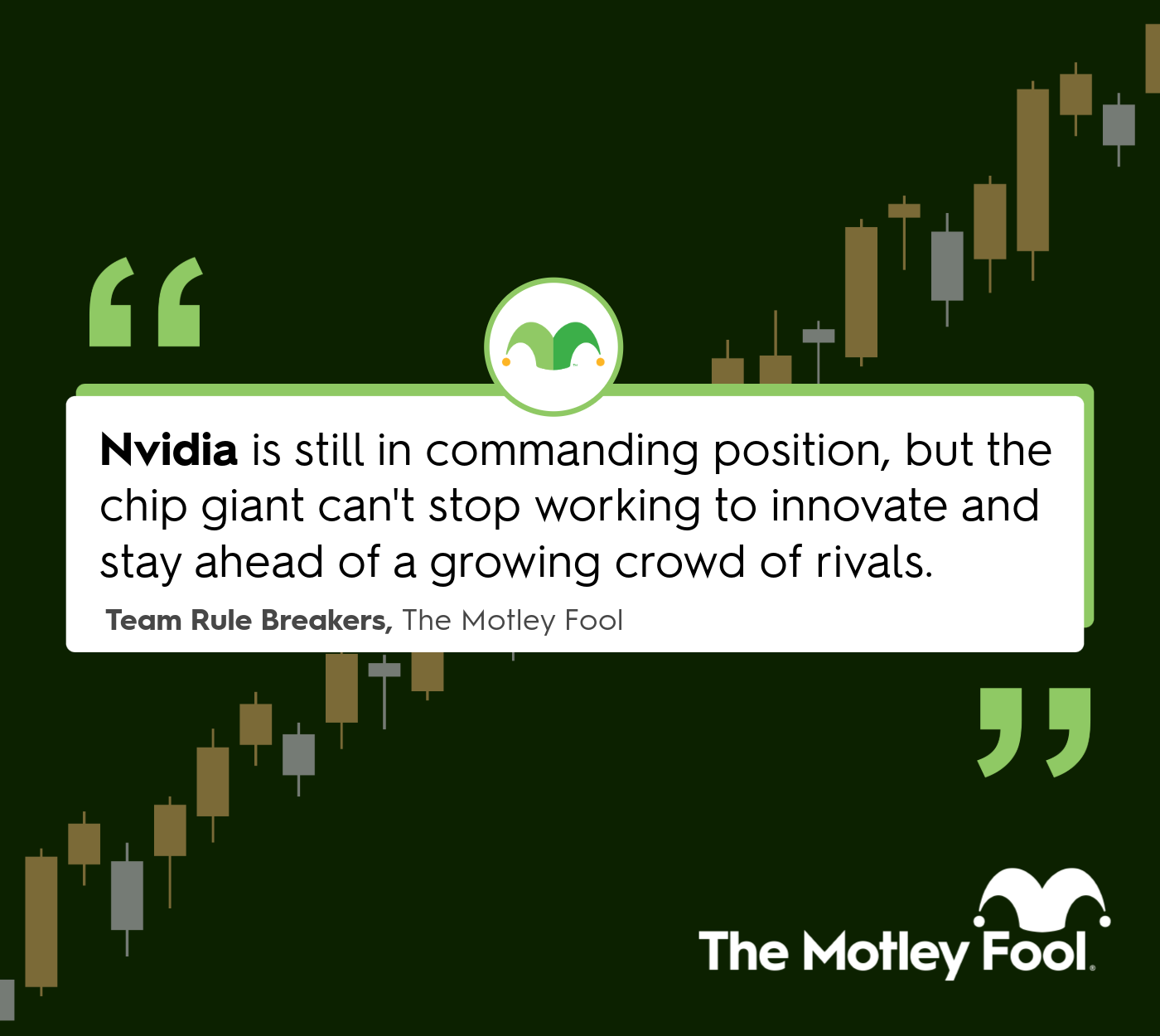Graphics processing unit (GPU) pioneer NVIDIA (NVDA 2.09%) was ready for the Mobile World Congress (MWC) in Los Angeles this week. While NVIDIA is no stranger to mobility tech -- it's best known for powering gaming devices and autonomous vehicle capabilities -- this year was different. As MWC opened, CEO Jensen Huang made a slew of announcements ranging from new company partnerships to 5G mobile networks to edge computing. A wave of new technology powered by GPUs is laying the groundwork for NVIDIA's next run higher.
The edge, EGX, and a bunch of new business partners
The first round of news surrounded the EGX supercomputer platform, NVIDIA's hardware and software designed to power edge computing. The edge refers to a new trend in which businesses have started bringing computational power from the cloud (a remote data center) closer to the source of data creation. Edge computing can be used to monitor sensors, cameras, and other "Internet of Things" devices, as well as to analyze data that can't be sent to the cloud -- either for privacy reasons or because of a need for faster response time.

NVIDIA EGX for edge computing. Image source: NVIDIA.
Since its official launch in the spring of 2019, the EGX platform has quickly been adopted by a number of big partners. During the MWC presentation, a few of those partners were announced:
- BMW (BMWYY +0.00%) is using EGX in its manufacturing operations to maintain quality control over vehicles leaving the assembly line.
- Proctor & Gamble (PG +2.53%) is building AI on EGX across its dozens of factories around the globe for quality and safety assurance.
- Samsung (OTC: SSNLF) is doing something similar to control its semiconductor manufacturing.
- The cities of San Francisco and Las Vegas are using EGX to count and monitor pedestrian and vehicle traffic for safety and to provide data analytics for retailers.
Walmart (WMT +0.31%) is also using AI to increase efficient operations in its store-of-the-future concept. Walmart is deploying cameras and sensors to manage things like foot traffic flow and inventory management, and connected devices are generating up to 1.6 terabytes of data per second per store that needs to be analyzed in real-time. EGX is being used at a local store level to manage the data flow and analytics, something the cloud can't handle nearly as efficiently.
The biggest partner announcement, though, was a new collaboration with Microsoft's (MSFT 1.10%) Azure cloud computing platform to help deploy AI at the edge for third parties in a secure way. An app framework and software development kit is being rolled out to help third-party developers build on top of the edge platform for smart-city, retail, manufacturing, healthcare AI, and edge computing.
Why NVIDIA chose Mobile World Congress
All of that is fine, but why did NVIDIA choose MWC as the place to make these announcements? It's because of 5G mobile networks -- the new standard that promises up to 1,000 times faster speeds and one-tenth of the latency (time between a user action and network response) of the current 4G standard.
Besides being faster, 5G has also introduced a new concept called network slicing. Telecom companies will be able to use 5G to share networking infrastructure across cell towers and deliver the right mobility services at the right place and time. Now GPUs are going to be put to use to this effect for the first time.
To that end, NVIDIA is joining forces with infrastructure hardware provider Ericsson (ERIC 4.88%) and IBM's (IBM +2.02%) cloud software provider Red Hat to enable telecoms to enhance GPU use, enabling things like video game streaming, augmented and virtual reality, smart-city services, and connected factories over a telecom network simultaneously with voice and data services.
NVIDIA has long been pushing the limits of the GPU beyond video gaming, and Huang and company still think GPUs can accelerate computing capabilities in the decades ahead. The Mobile World Congress presentation showing off EGX and new telecom capabilities is proof of that point. Far from its growth story being over, this chip designer is finding new ways to embed itself in the world of technology and carve out new areas for growth.











